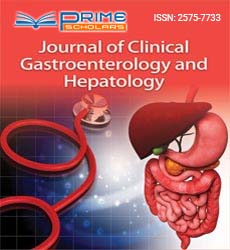Perspective - (2024) Volume 8, Issue 4
Understanding Stomach Infections: Causes, Symptoms, and Treatments
Cheng Kun*
Department of Anatomy, Tianjin University, China
*Correspondence:
Cheng Kun,
Department of Anatomy, Tianjin University,
China,
Email:
Received: 31-Jul-2024, Manuscript No. IPJCGH-24-21628;
Editor assigned: 02-Aug-2024, Pre QC No. IPJCGH-24-21628;
Reviewed: 16-Aug-2024, QC No. IPJCGH-24-21628;
Revised: 21-Aug-2024, Manuscript No. IPJCGH-24-21628;
Published:
28-Aug-2024, DOI: 10.36648/2575-7733.8.4.37
Introduction
Stomach infections, commonly referred to as gastroenteritis,
are a widespread health concern affecting millions of individuals
each year. These infections can be caused by various pathogens,
including viruses, bacteria, and parasites. Understanding
the causes, symptoms, diagnosis, and treatment options is
crucial for managing stomach infections effectively. A stomach
infection typically refers to inflammation of the stomach and
intestines, leading to symptoms such as diarrhea, vomiting,
and abdominal pain. This condition can range from mild to
severe and may require medical attention depending on the
underlying cause and severity of symptoms. Viruses are among
the most common culprits of stomach infections.
Description
The norovirus and rotavirus are particularly notorious for
causing gastroenteritis outbreaks, often associated with
contaminated food or water. Norovirus is highly contagious and
can spread rapidly in crowded environments, such as schools
and cruise ships. Bacterial infections are another leading cause
of stomach infections. Frequently found in undercooked poultry
and eggs, Salmonella can lead to significant gastrointestinal
distress. Commonly associated with raw or undercooked
poultry, Campylobacter can cause fever, abdominal pain, and
diarrhea. Parasitic infections, although less common, can also
lead to stomach infections. Parasites such as Giardia lamblia
and Cryptosporidium can be contracted through contaminated
water sources, leading to prolonged gastrointestinal
symptoms. Non-infectious causes of stomach symptoms can
include food allergies, intolerances, or conditions like irritable
bowel syndrome and inflammatory bowel disease. Stress and
changes in diet can also exacerbate symptoms. The symptoms
of a stomach infection can vary depending on the causative
agent but often include: Many individuals experience severe
nausea that can lead to vomiting. Frequent, watery stools are a
hallmark of gastroenteritis. A low-grade fever may accompany
gastrointestinal symptoms. Due to fluid loss from vomiting and
diarrhea, dehydration is a significant concern, especially in
young children and the elderly. Diagnosing a stomach infection
typically begins with a thorough medical history and physical
examination. Healthcare providers may ask about recent food
consumption, travel history, and exposure to sick individuals. In
some cases, laboratory tests may be necessary to identify the
specific pathogen responsible for the infection. These tests can
include: Analyzing stool samples can help detect the presence
of bacteria, viruses, or parasites. In severe cases, blood tests
may be performed to assess overall health and check for signs
of dehydration. The treatment for stomach infections often
focuses on relieving symptoms and preventing dehydration.
Once vomiting subsides, individuals are encouraged to start
with bland foods, such as toast, rice, and bananas. Gradually
reintroducing normal foods can help ease recovery. Over-thecounter
medications, such as antiemetics (to control nausea)
or anti-diarrheals, may be used cautiously.
Conclusion
Further research into novel therapeutic targets and
personalized treatment approaches holds promise for
improving the management of pancreatitis in the future.
Pancreatitis elicits a complex interplay of innate and adaptive
immune responses, involving the activation of resident immune
cells within the pancreatic tissue and recruitment of circulating
leukocytes to the site of inflammation. Macrophages,
neutrophils, and lymphocytes contribute to the production of
pro-inflammatory cytokines, chemokines, and reactive oxygen
species, perpetuating tissue injury and systemic inflammation.
Concurrently, anti-inflammatory mechanisms, such as
regulatory T cells and anti-inflammatory cytokines, attempt to
counterbalance the inflammatory cascade and promote tissue
repair.
Citation: Kun C (2024) Understanding Stomach Infections: Causes, Symptoms, and Treatments. J Clin Gastroenterol Hepatol.
8:37.
Copyright: © 2024 Kun C. This is an open-access article distributed under the terms of the Creative Commons Attribution Li�cense, which permits unrestricted use, distribution, and reproduction in any medium, provided the original author and source
are credited.

